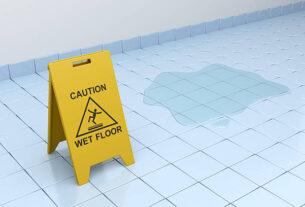It’s understandable to be tempted to pour the extra cooking oil or grease down the drain and start eating after your vegetables have been sautéed or your pancetta has been pan-crisped to perfection. What harm could it possibly do, given that the sink is nearby and the oil is already liquid?
Even the odd shortcut in the grease disposal process, such as pouring heated oil down the drain, can mount up over time and result in a hefty plumbing expense.
When heated oils cool, they typically lose their liquid state.
When warm, many oils, such as butter, coconut oil, bacon fat, or Crisco vegetable shortening, are in a liquid condition; yet, at room temperature, they are in a solid state.
Jake Stiffler, president of Space Coast Plumbing in Melbourne, FL. noted that hot grease that is poured down the sink is still liquid. But as it cools, the grease solidifies and adheres to the pipe walls.
The oil will congeal and linger around under the sink, usually right behind the trap, where the pipe forms a U-bend. This also applies to any food particles and debris that are flushed down the drain.
According to Shane Mahaffey, CEO and master plumber at Towne Plumber in Woodstock, Georgia, “Anything heavier than water gets caught here.” Long-term blockages and foul odors emanating from your kitchen drain can be brought on by the leftover oil and food particles.
Page Contents
Cooking oils that remain liquid might still damage your pipes
Despite the fact that oils like canola and olive oil don’t harden at room temperature, plumbers still don’t recommend dumping these liquids down the sink. This is due to the hydrophobic properties of these oils, which prevent them from mixing readily with water and instead cause them to coat your pipes.
“As they move through your pipes, they’ll fuse with the bits of food particles, fats from table scraps, hair, and other debris hanging out in your drain,” explained Mahaffey. The water in your sewer will ultimately flow back up into your pipes due to the obstruction that has been formed.
Using hot water or dish soap to chase after the oils is ineffective
According to an ancient wives’ story, pouring oil down the drain and then running hot water and dish soap down the sink would help the oil move down the pipes before it thickens or solidifies. However, this method is less effective than you may imagine.
Keep in mind that anything heavier than water can and will become stuck in your kitchen plumbing’s U-bend, advised Mahaffey. DIY solutions like this one might delay the inevitable, but they won’t completely remove the oil.
About 3 billion gallons of spent cooking oil are produced annually by hotels and restaurants in the United States.
Depending on the type of cooking oil you use, even if you just flush oils down your sink once every few weeks, the residue left behind each time will either form a thicker and thicker film on your pipes or a larger and larger solid mass.
According to Mahaffey, neither hot water nor dish soap will prevent repeated dumping of oil or fat from finally congealing once they reach room temperature, much alone trapping food particles and other detritus.
In Stiffler’s words, “the further down the oil makes it before it hardens, the more difficult and costly a problem it can become to fix.”
Dramatic events may also occur in nearby sewage systems
When the grease or oil does manage to slink its way to the sewer line, it deposits in the main wastewater, which also contains, you guessed it, other people’s oils, fats, and grease in addition to highly concentrated pollutants.
According to Stiffler, because these oils have a fatty foundation, they link with other elements found in sewers, such calcium and sodium, as well as food particles and other items that shouldn’t be flushed down pipes. As the accumulation persists, it adheres to the sewer walls and forms what is referred to as a “fatberg.”
The only method to get rid of them, according to Stiffler, is to contact a specialist who will utilize high-pressure water jets to dissolve the problem. The essential lesson is to dispose of oil properly so that you may do your bit and prevent a fatberg.
How to properly dispose of cooking oil and fat
Restaurants must collect grease and oils in traps and have them removed by a renderer (a business that specializes in collecting used cooking oil and recycling it) or face fines.
The illegal practice of grease dumping would cause major problems in municipal sewer pipes because hotels and restaurants in the U.S. produce about 3 billion gallons of used cooking oil annually (and wastewater treatment plants are typically not designed to handle contaminants like fats, oils, and grease).
How can you play a part?
No matter the type of oil—butter, shortening, olive oil—Mahaffey advised storing it rather than pouring it down the drain.
Pick a container to collect the oil in first, such as a large Ziploc bag, a coffee can, or an empty plastic bottle. When the oil is cool enough to handle, carefully scrape or pour it into the container (a funnel can make pouring much simpler).
When the container is filled, Frederick advised sealing it and discarding it; you can add various oils over time.
It is also possible to turn used cooking oils into biofuel: “Many local recycling centers will accept your cooking oils, even if you’ve combined all of your oils in one container,” Mahaffey said.
To find out if your local recycling facilities take cooking oils and whether they have any requirements for storage or separation, you can conduct an online search for them. Respect their instructions properly.
How to proceed if you unintentionally pour oil or grease down the sink.
Take a deep breath first. Your kitchen plumbing won’t be destroyed by one batch of grease down the drain.
Mahaffey said that if this occurs, you should immediately flush your drain with a pot of boiling water, followed by a one-two punch of vinegar and baking soda.
Pour one cup of baking soda down the drain first, followed by one cup of vinegar mixed with one cup of water. After five to ten minutes, plug the drain and finish the job with a second pot of boiling water.
The boiling water increases pressure, pushing the undesired fats down the drain while the bubbling action of the baking soda and vinegar helps dislodge dirt, according to Mahaffey. Then, remind yourself not to repeat the action.

Lois Lane is a professional blogger and a seasoned Content writer for wellhousekeeping.com. With a passion for simplifying complex Home Decor topics, he provides valuable insights to a diverse online audience. With four years of experience, Lois has polished his skills as a professional blogger.




